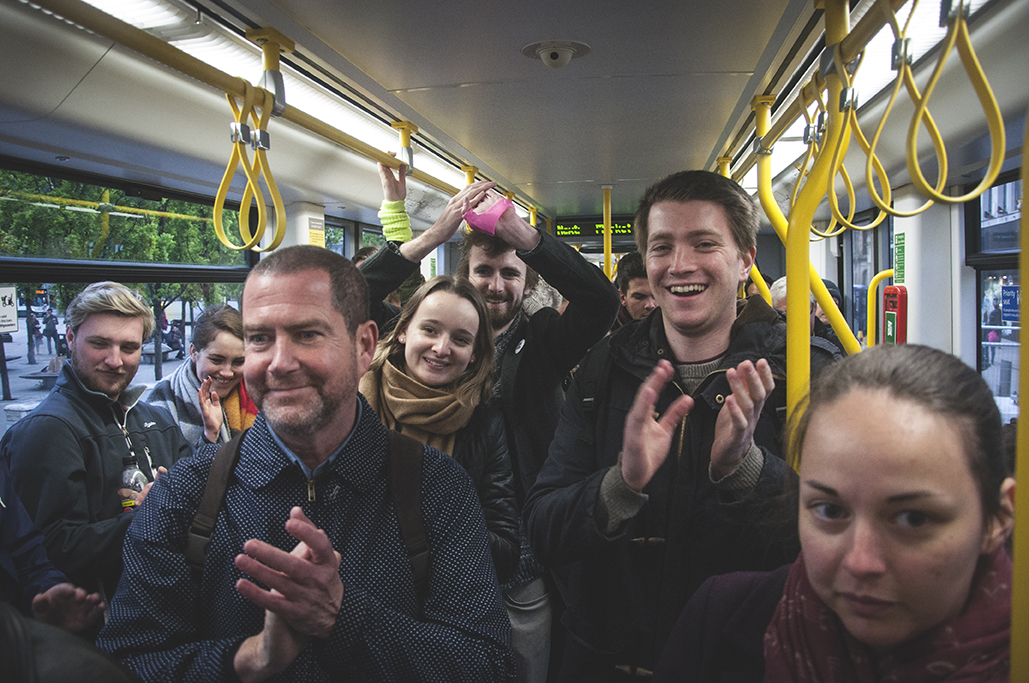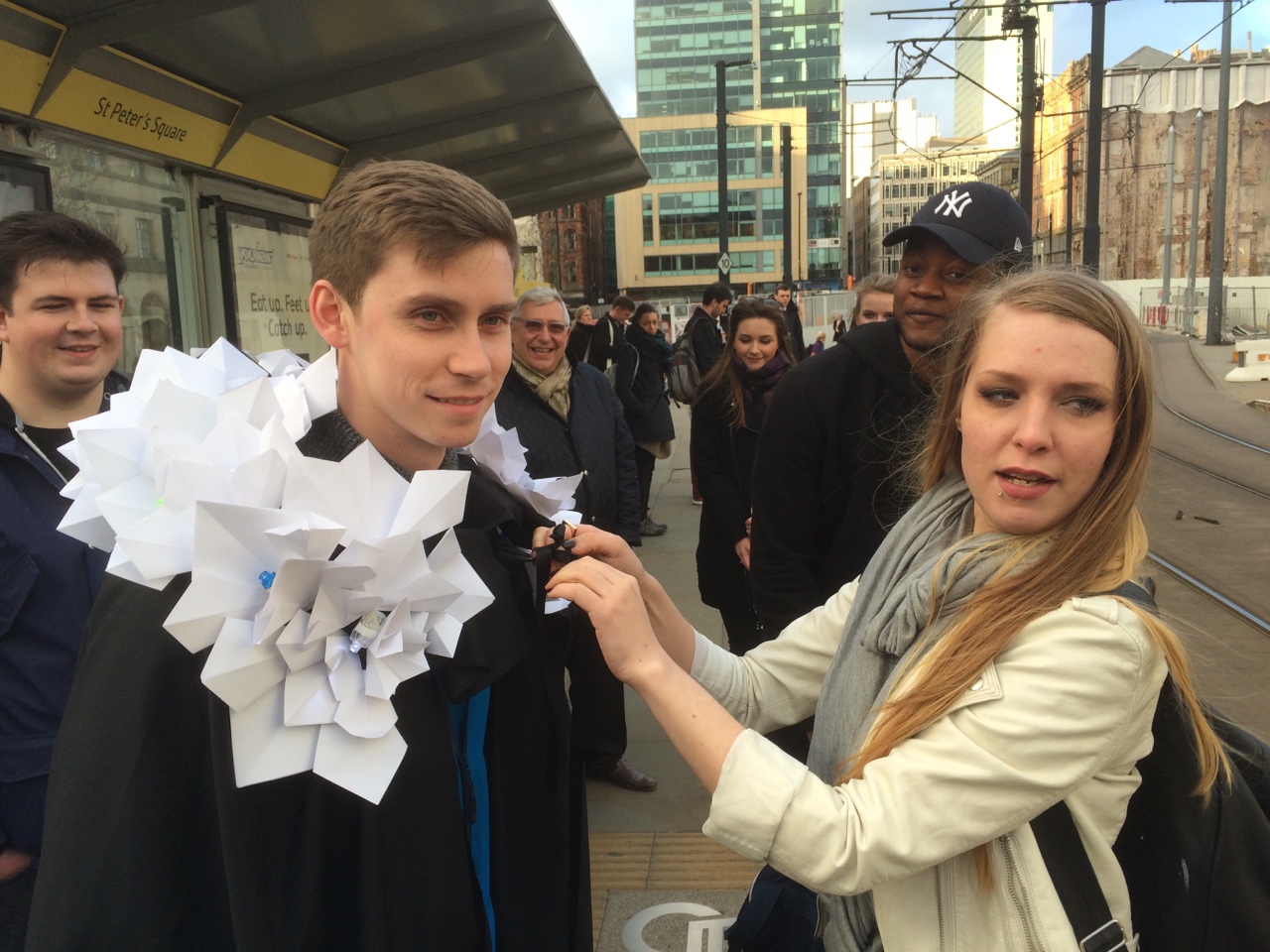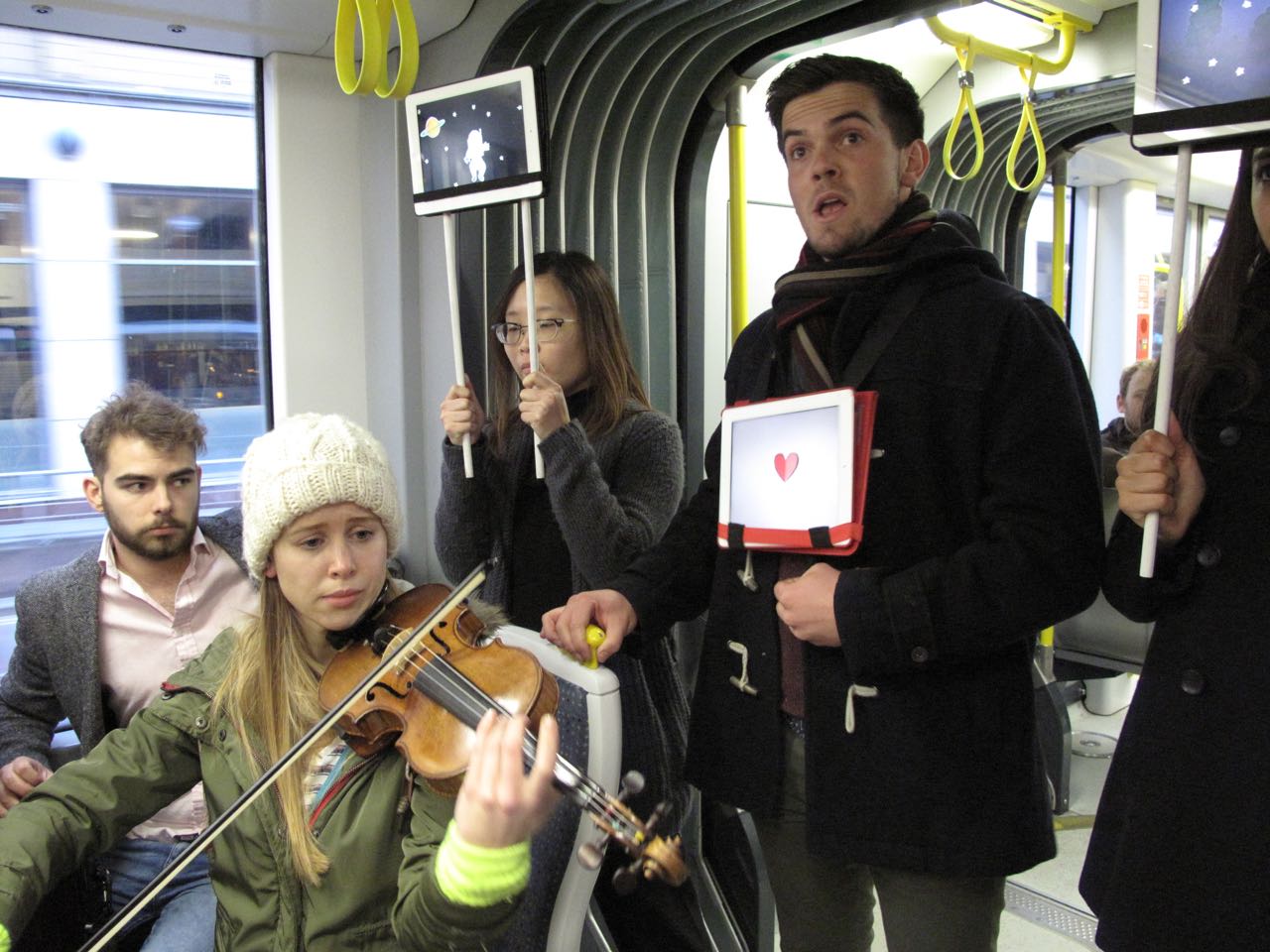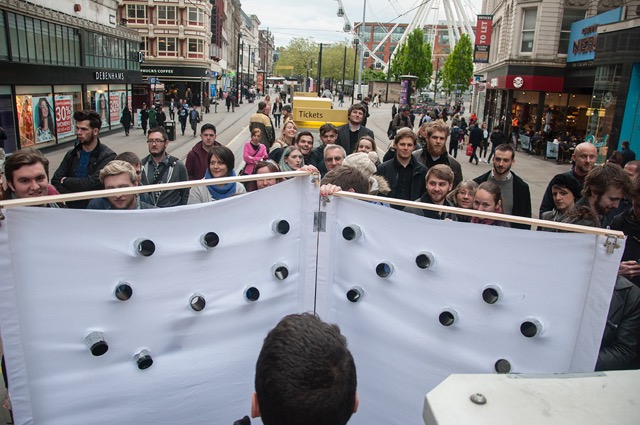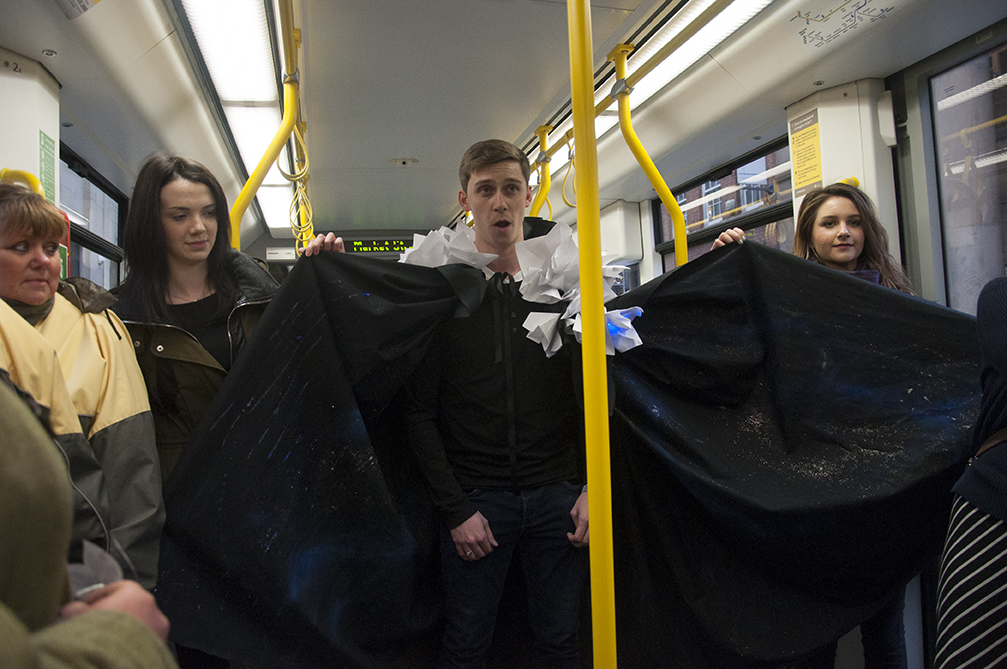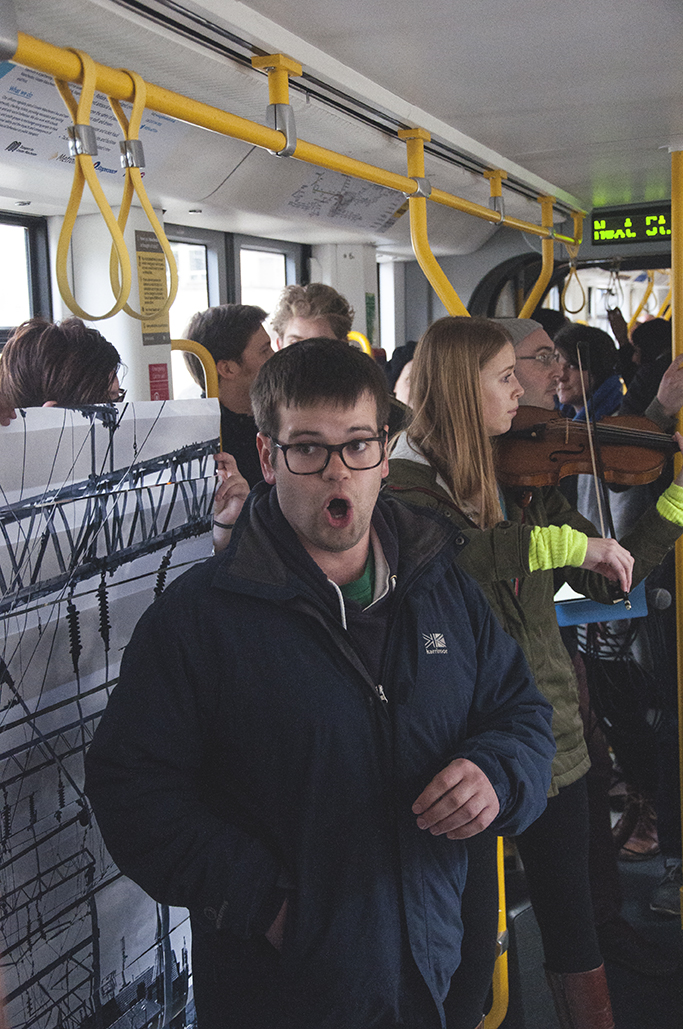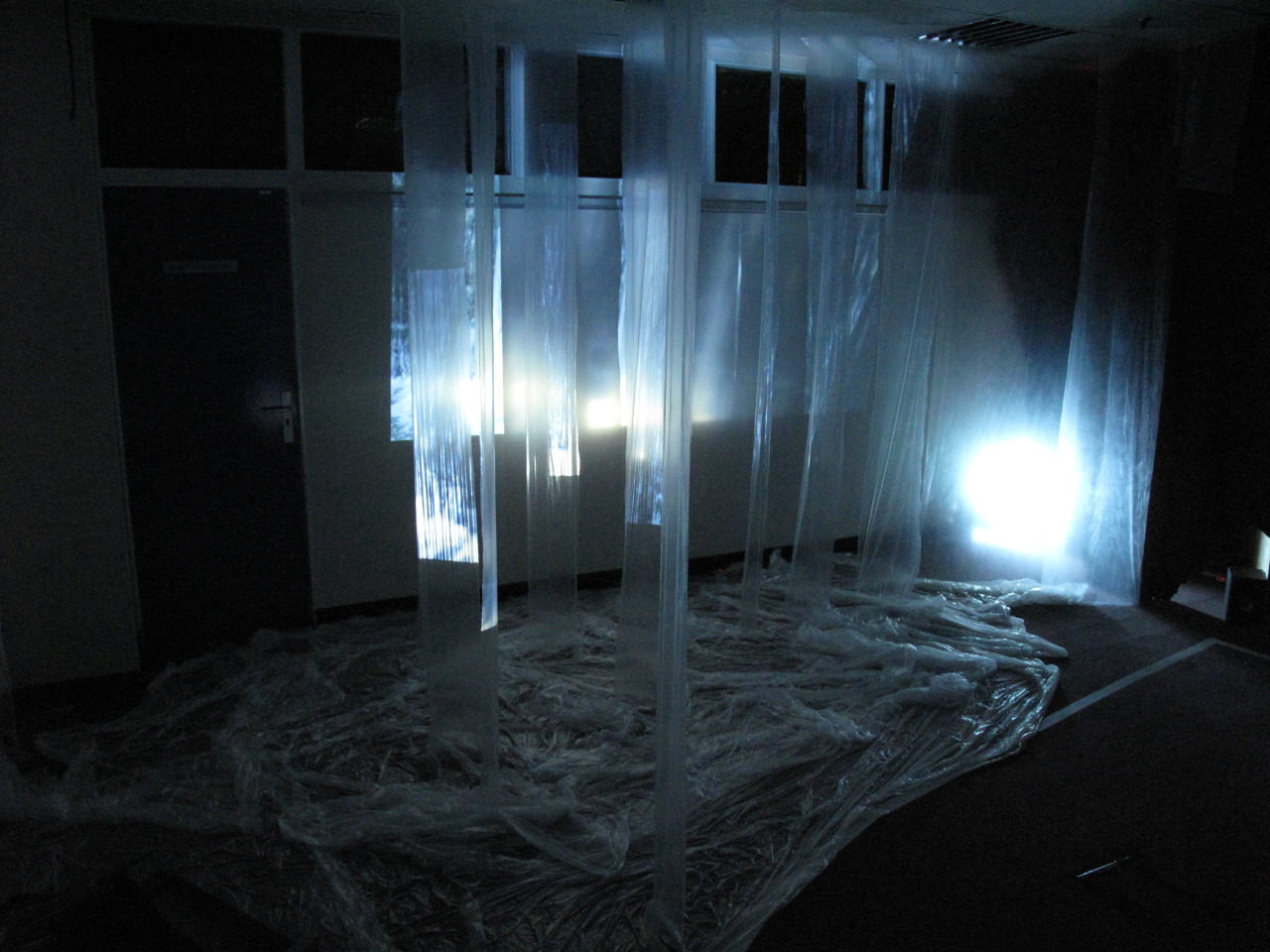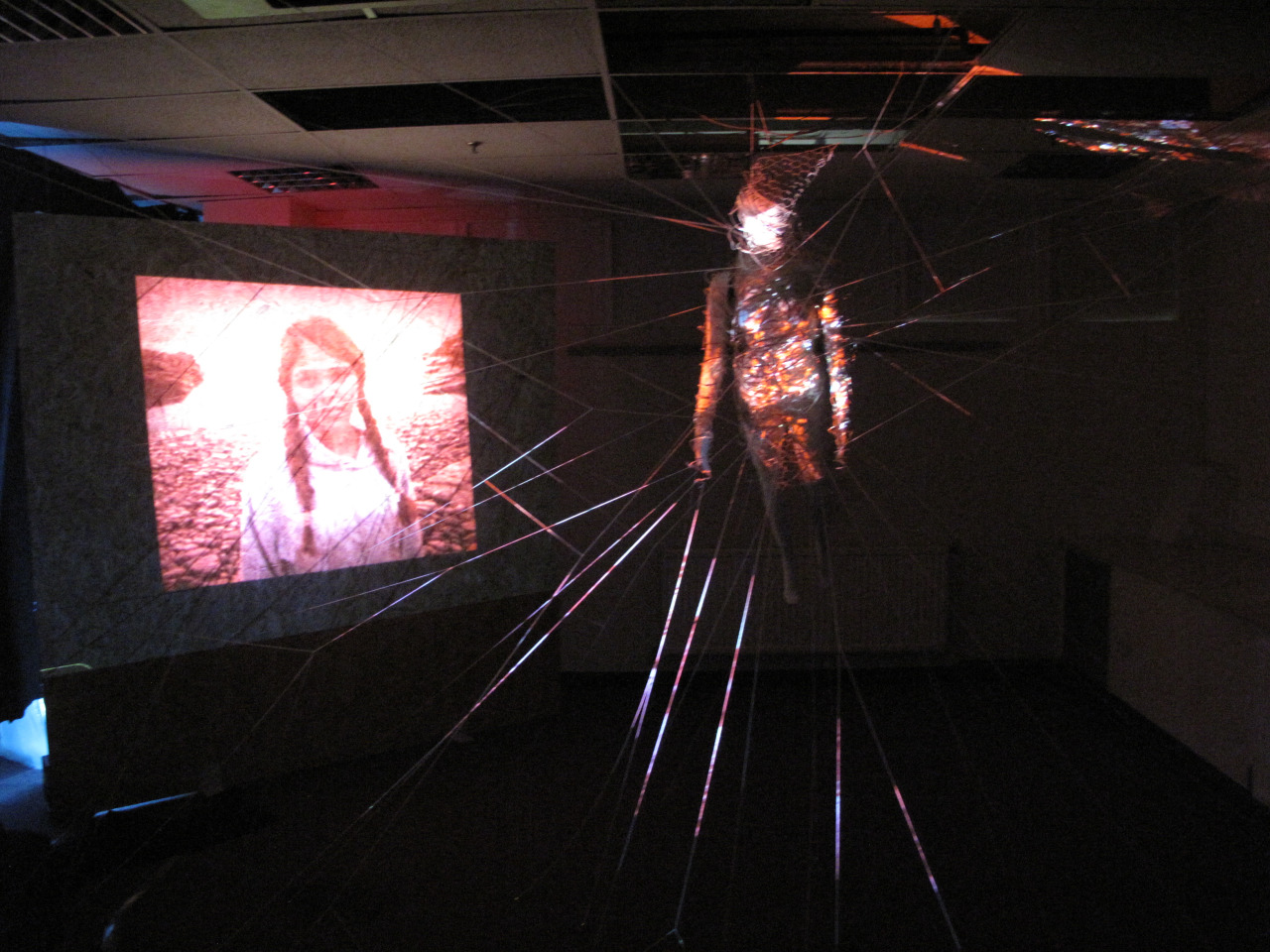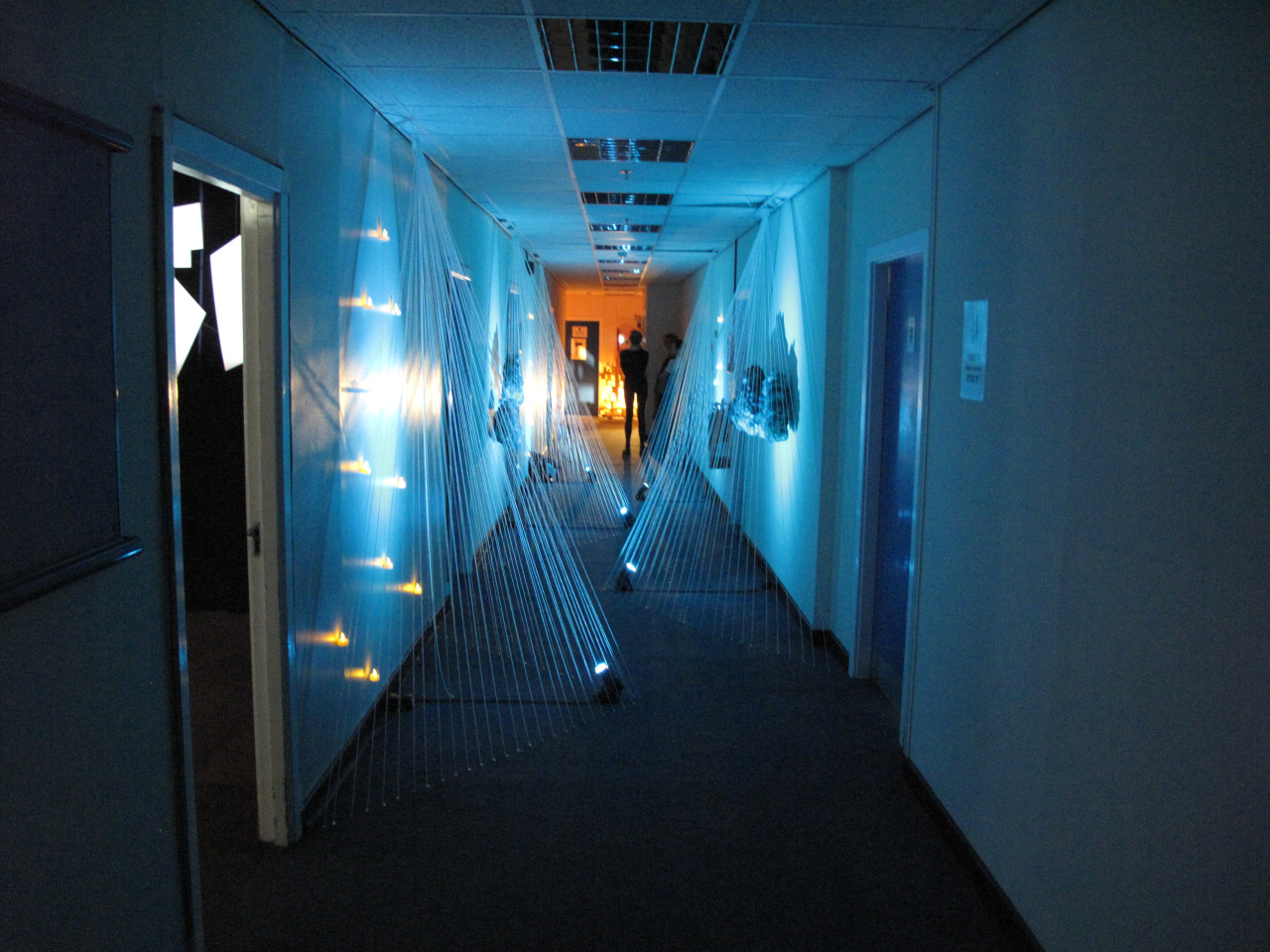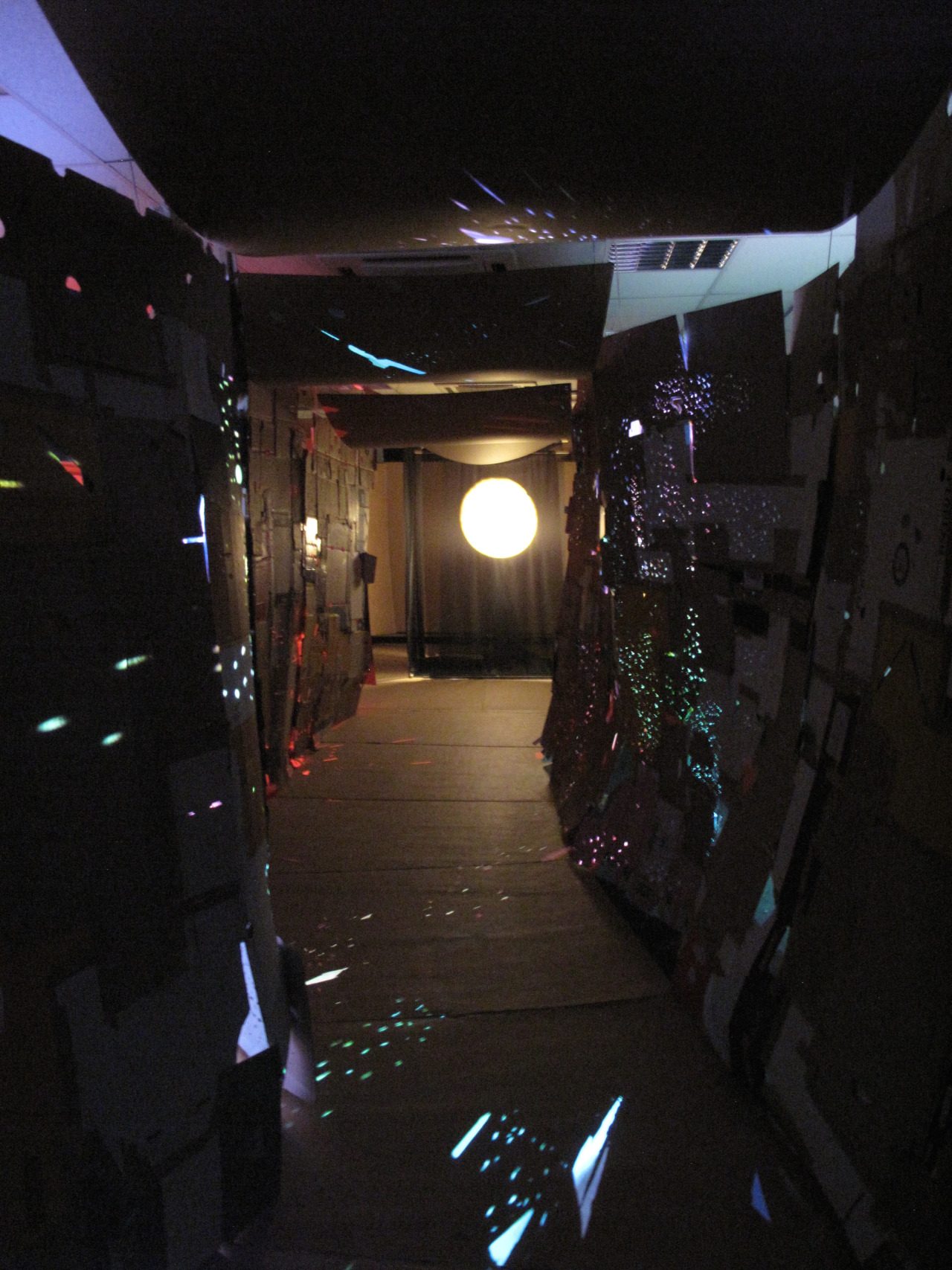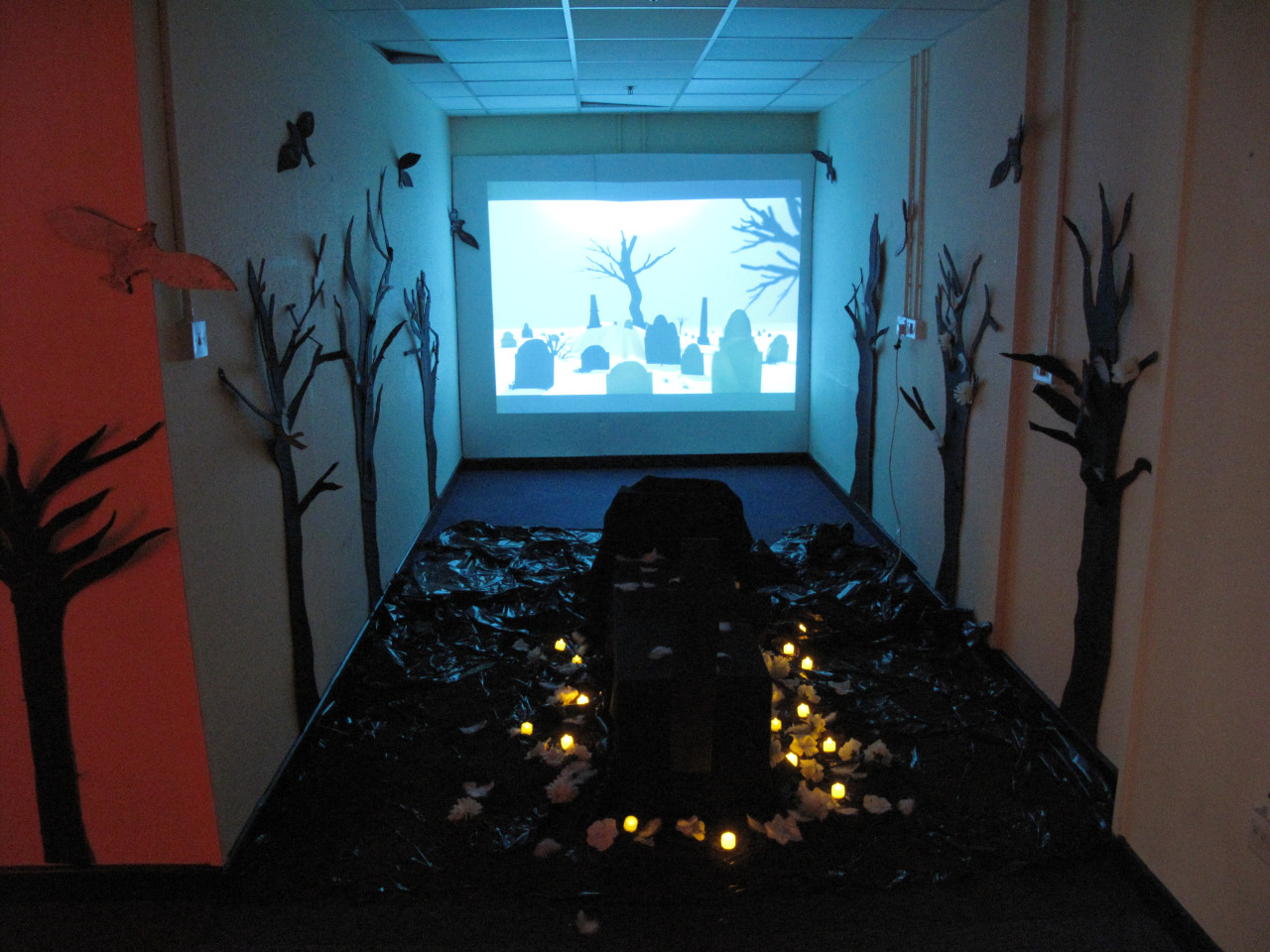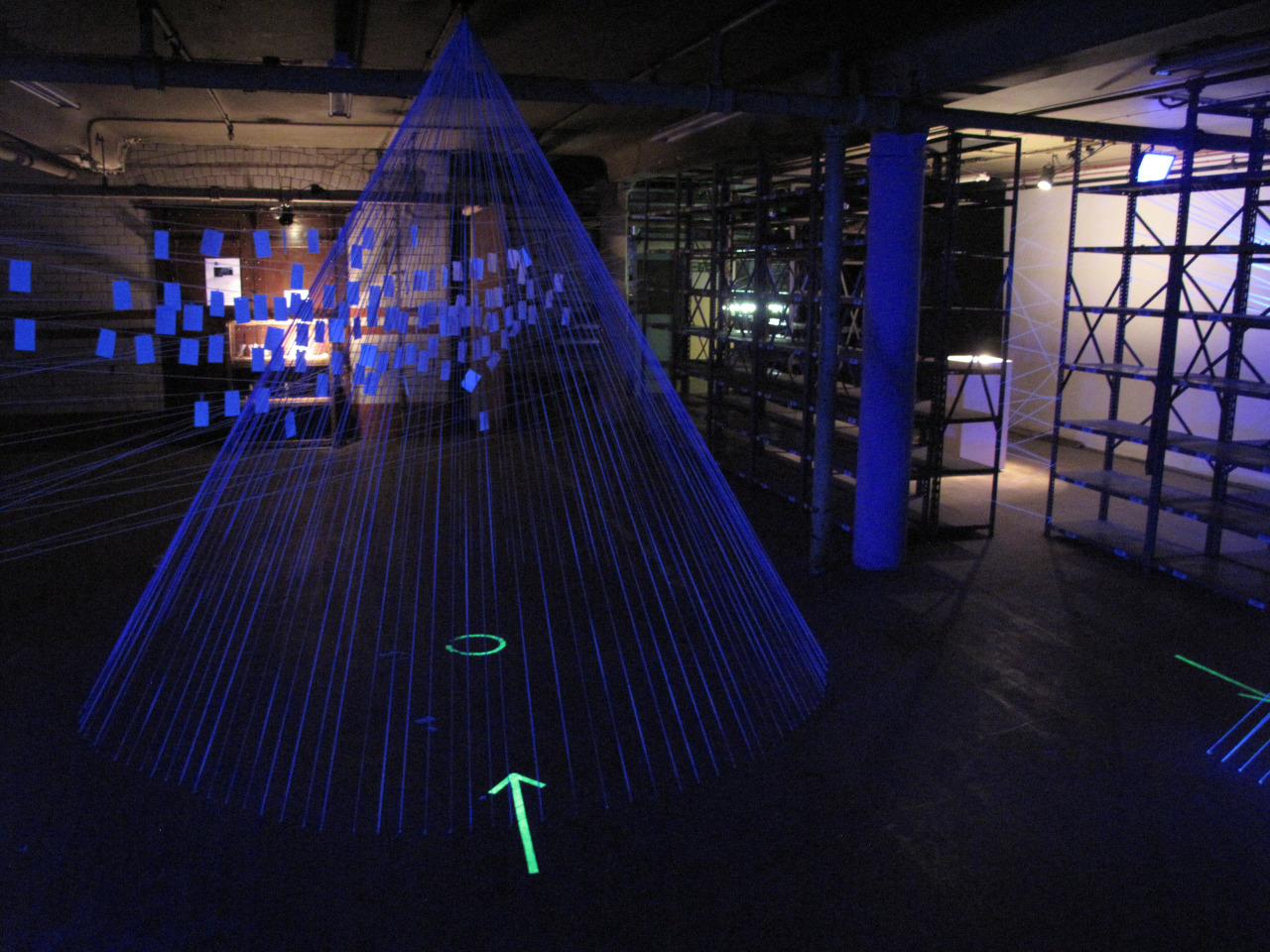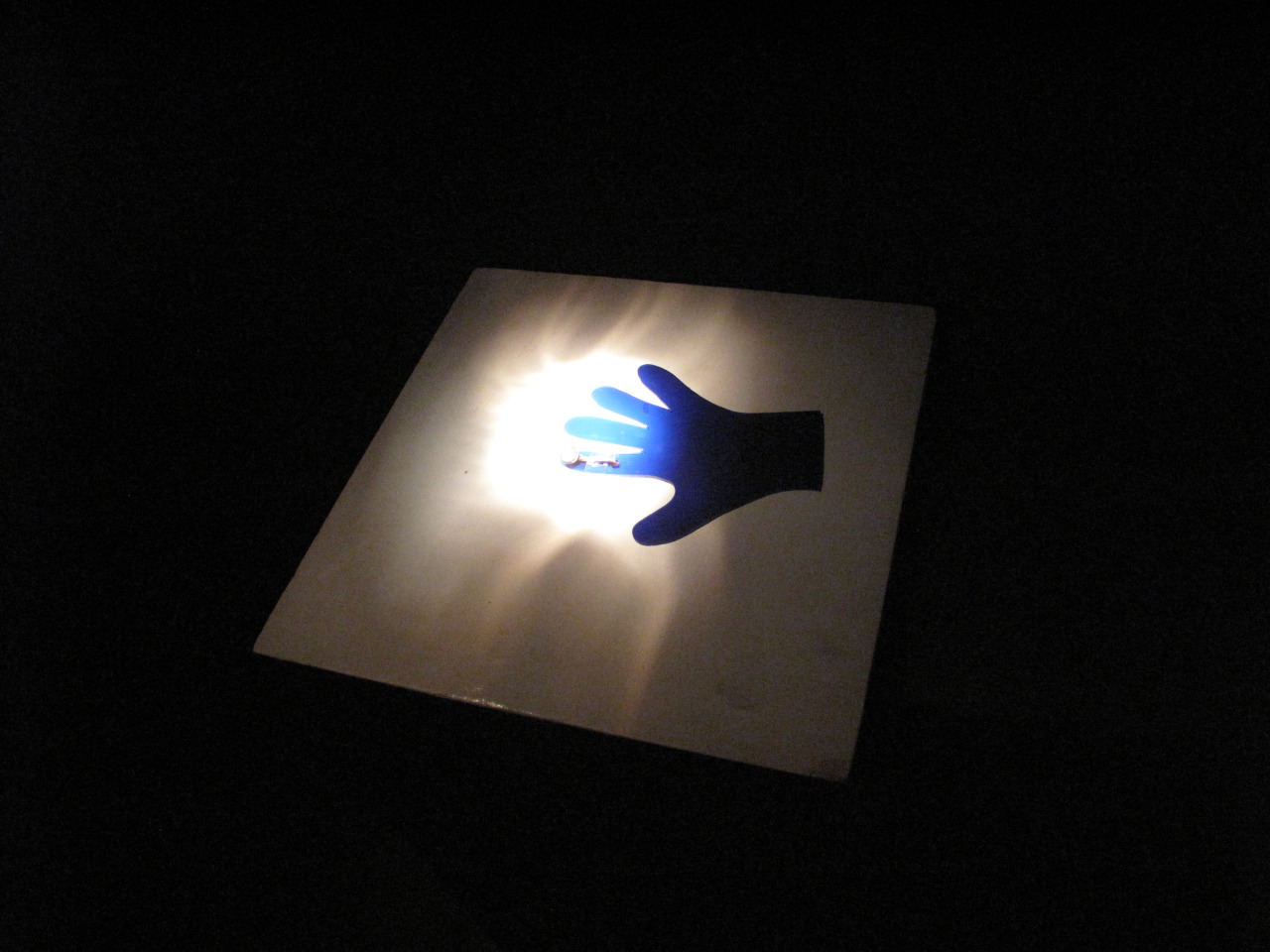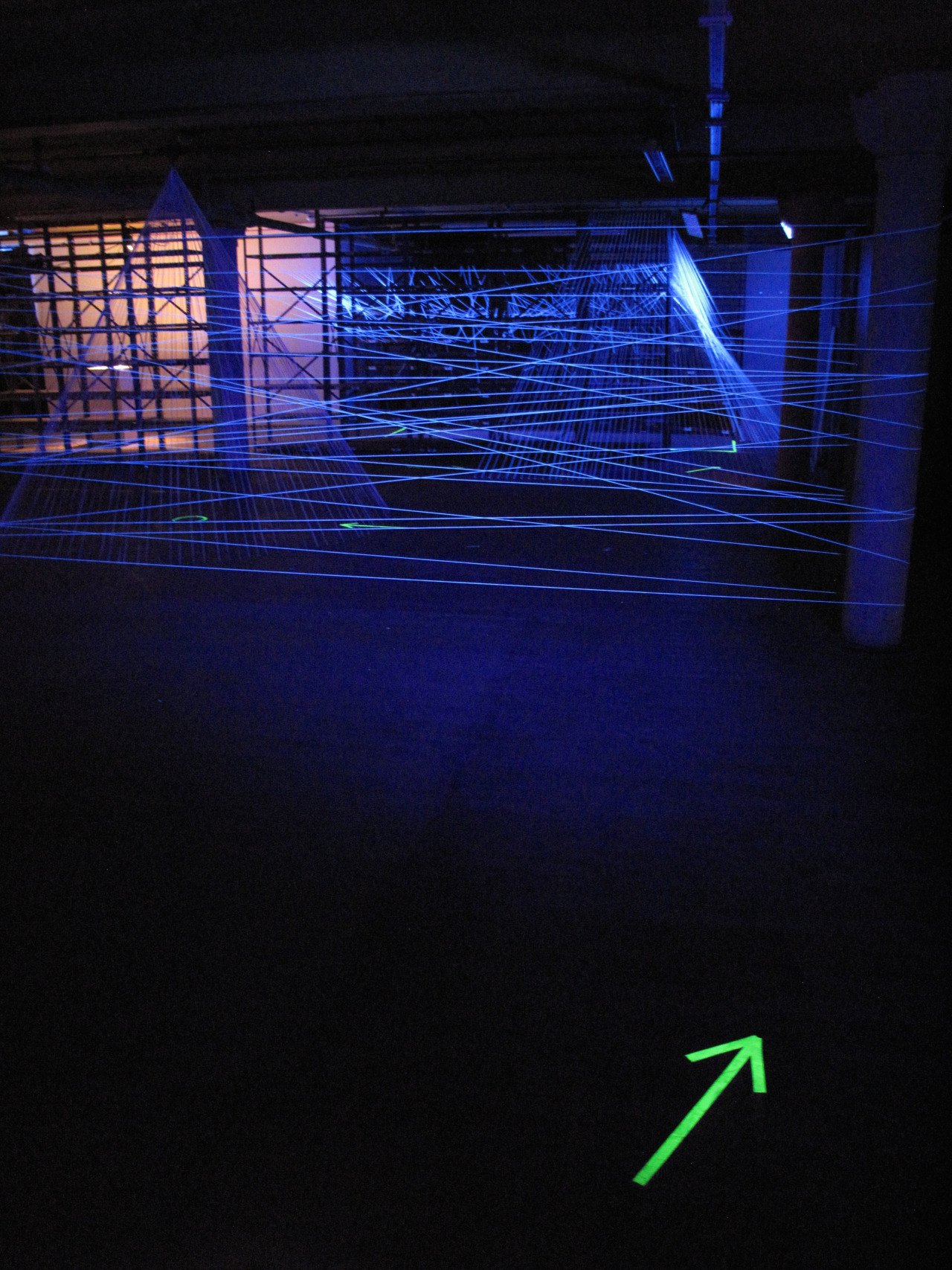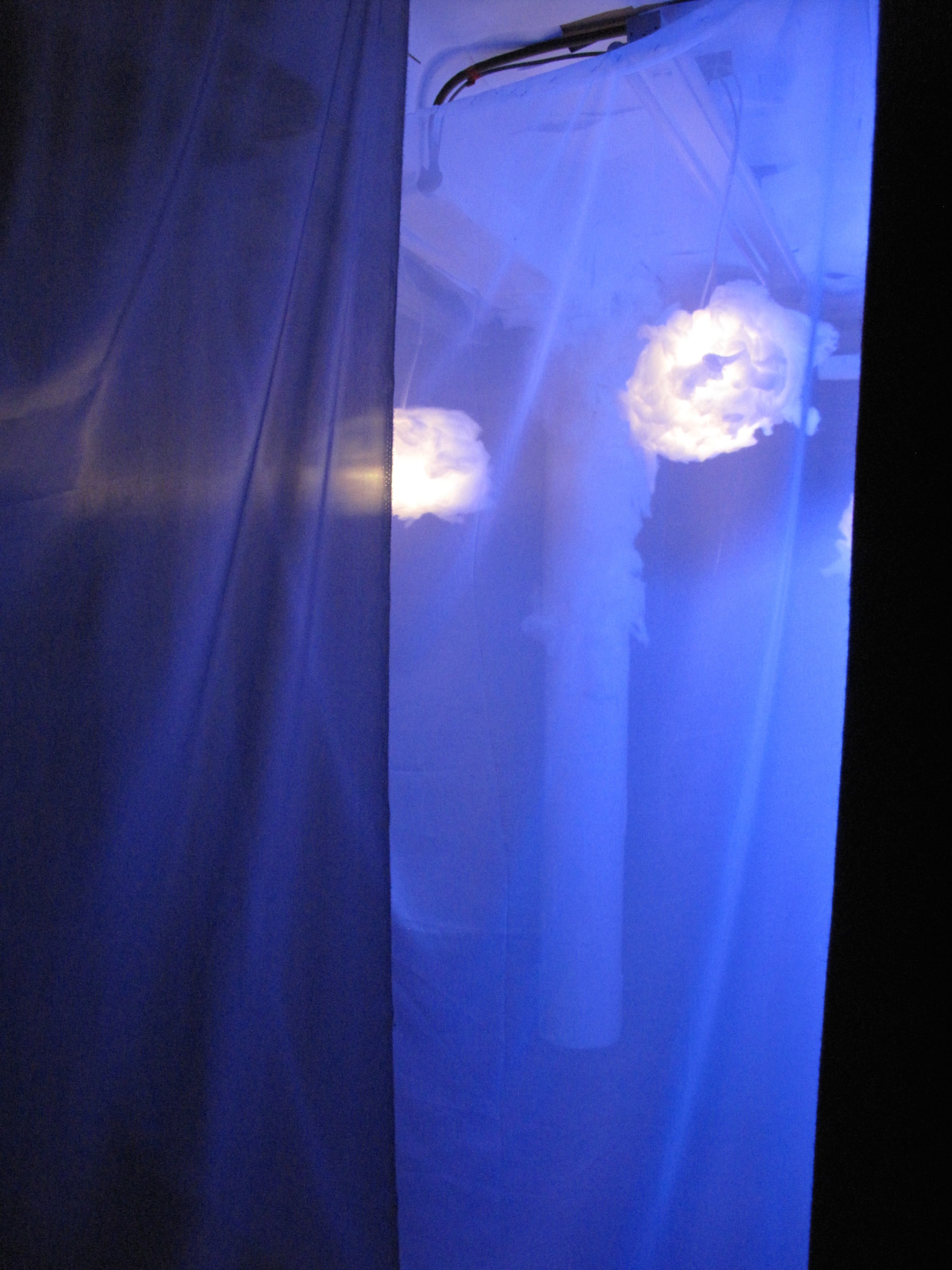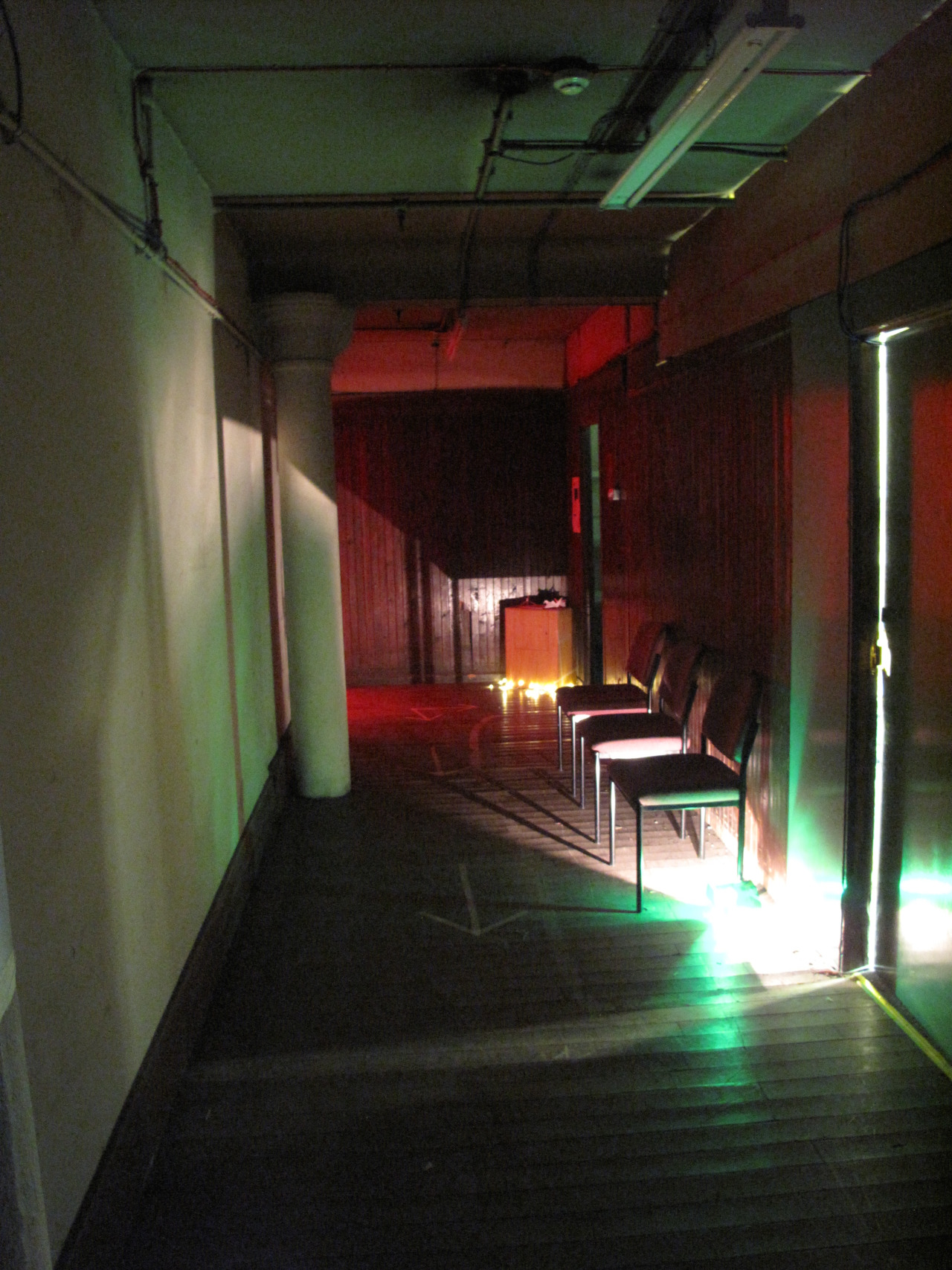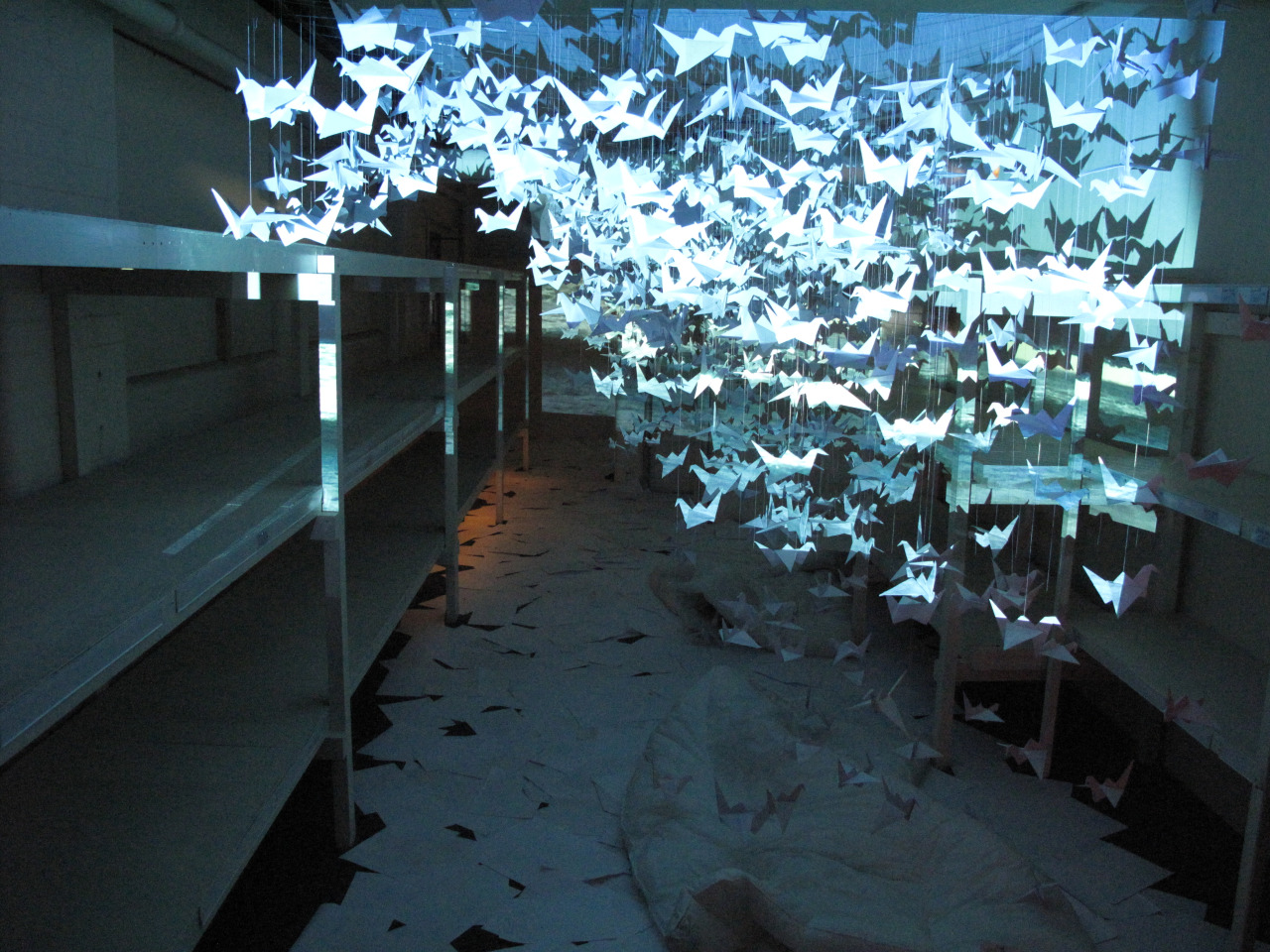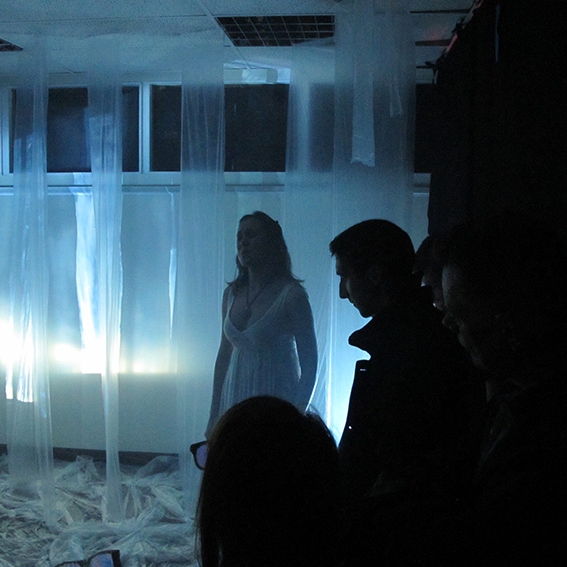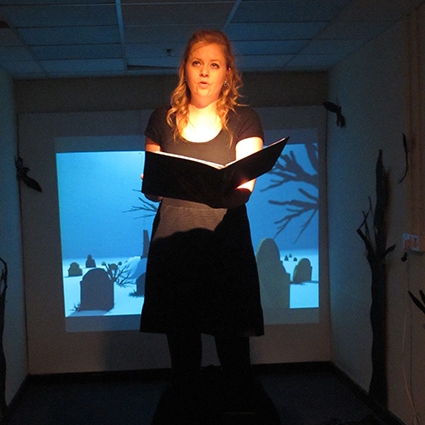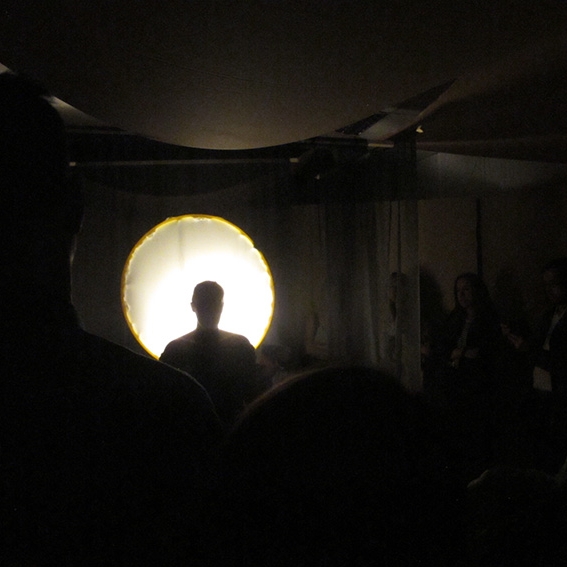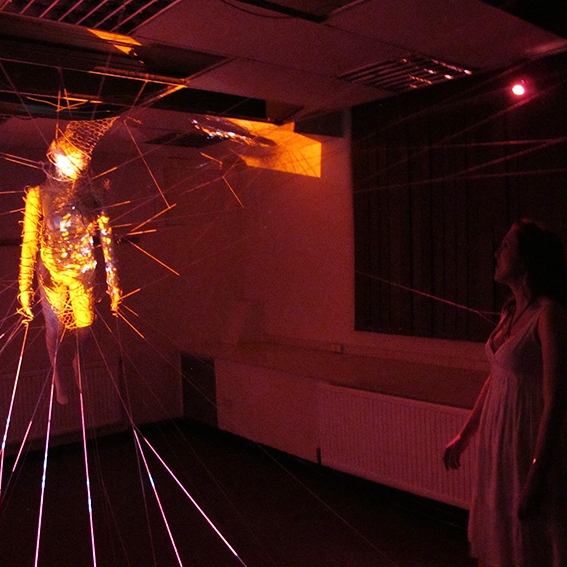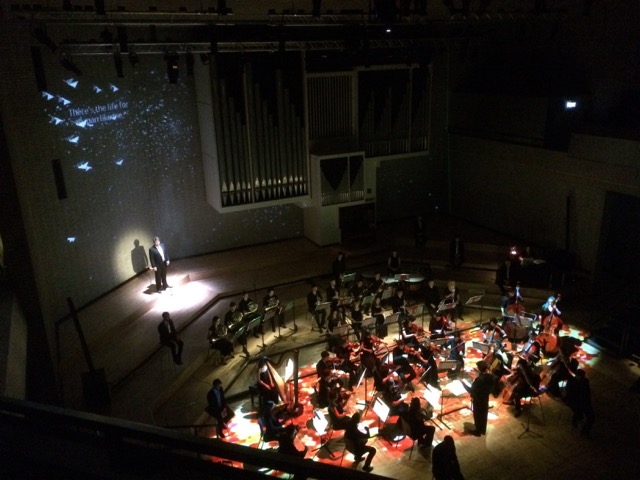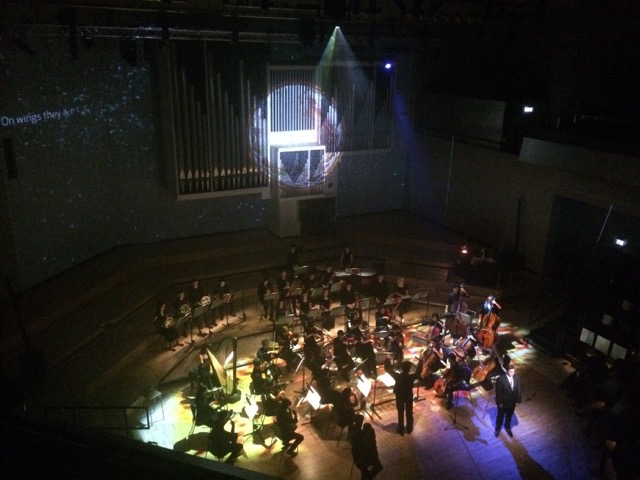UNIT X - Mise en Scène
Mise en Scène, a project that brings together students from the Royal Northern College of Music and Manchester School of Art to create a unique collaborative learning experience. Through a vertical studio project between students from 1st and 2nd year BA(Hons) Interior Design, Creative Multimedia and MA Design, students developed creative interpretations and responses to a shared brief with Opera students from the RNCM. Using embedded technologies, projection mapping, set and spatial design practices students mapped the movements of performers, monitored the pulse and actions of the conductor and tracked the tonal qualities of the orchestra and singers, creating narrative driven generative and illustrative visuals.
The students performances ‘out in the city’ as part of the national festival Museums Open Late and Manchester After Hours was an opportunity to perform scenes to arias and instrumental works working with Transport for Greater Manchester to perform work en-route on the tram network and later transporting these city interventions to the Concert Hall at the RNCM. Creative responses by students sought to inspire imagination and transport the audience and participants between narratives on a journey that explores the emotions of love, life and death, that travels from the depths of the sea to the frontiers of outer space. Narratives composed by School of Art students framed and set the scene to beautiful lyrics and the composition of the works performed by students from the RNCM.
The project was facilitated by staff from both institutions and used a vertical studio methodology to help facilitate, support and activate learning through real professional experiences (Wenger, 2008). Students became the professionals, the artists and the directors. The learning process was facilitated through inspiration workshops, skills support sessions, specialist project input from performance professionals and provided a collaborative platform for tutors as well as students to engage and share creative disciplines and vision for the learning experience (Sigurjonsson, 2014). The project culminated in a final performance that put students at center stage, performing as professionals and learning from the process of launching themselves through a chain of ‘real world’ experiences (Liem, 2010).
A constructivist approach to pedagogy realised through a ‘vertical studio’ model, within Unit X: a Faculty wide module that nurtures collaboration and experimentation. The framework of the studio reflects working professional practices and places the academic in the role of facilitator and mentor.
References:
Liem, A. (2010) Planning and Early Implementation of Vertical Studio Teaching Based on a System Design Approach (online). Link
Sigurjonsson, J. (2014) Positioning Industrial Design Education within Higher Education: How to face increasingly challenging market forces? (online). Link
Wenger, E. (2008) Communities of practice: Learning, meaning and identity. Cambridge University Press: New York.
